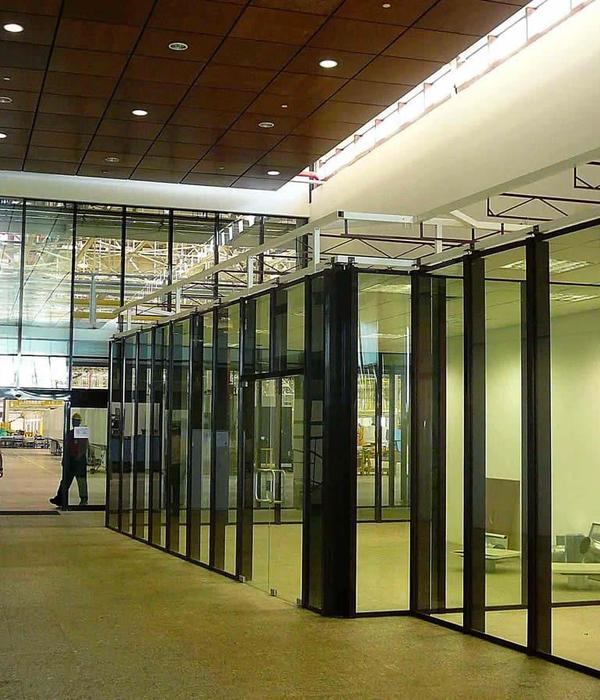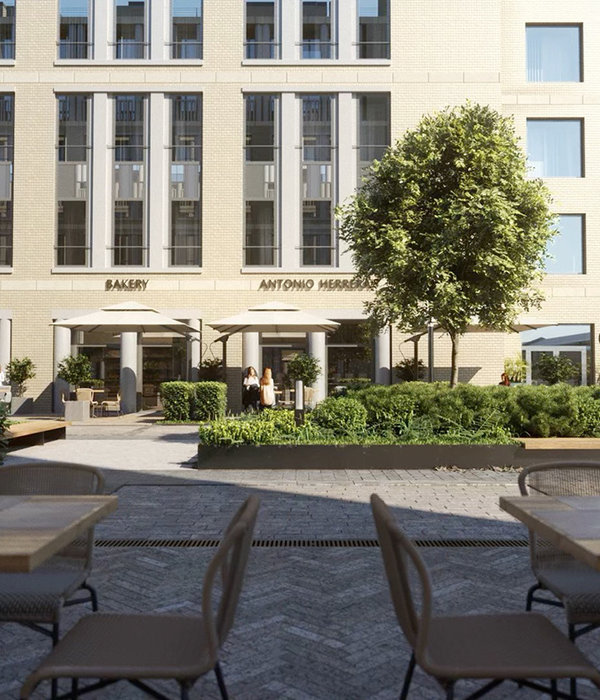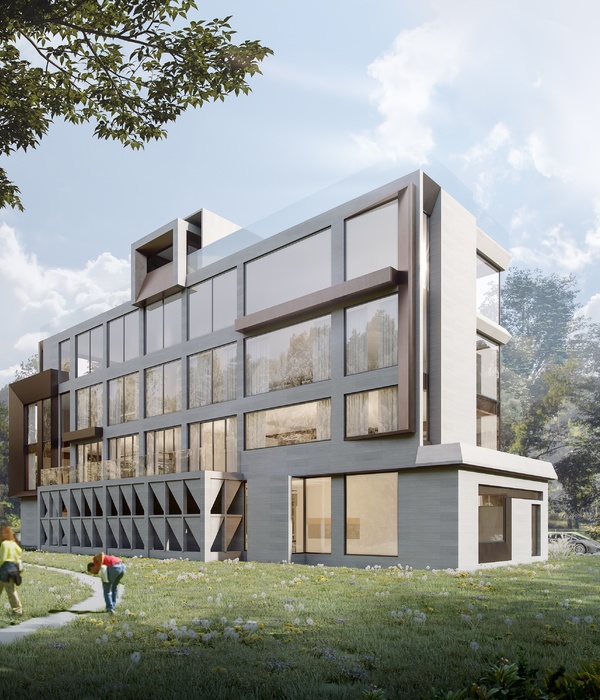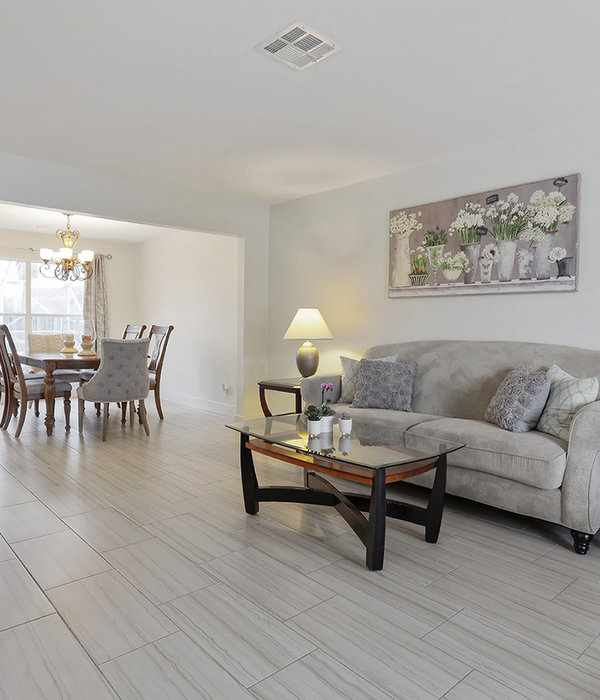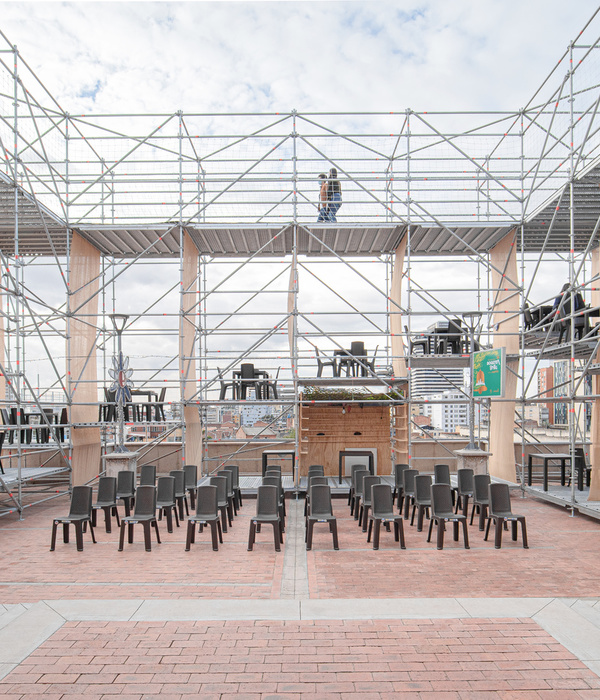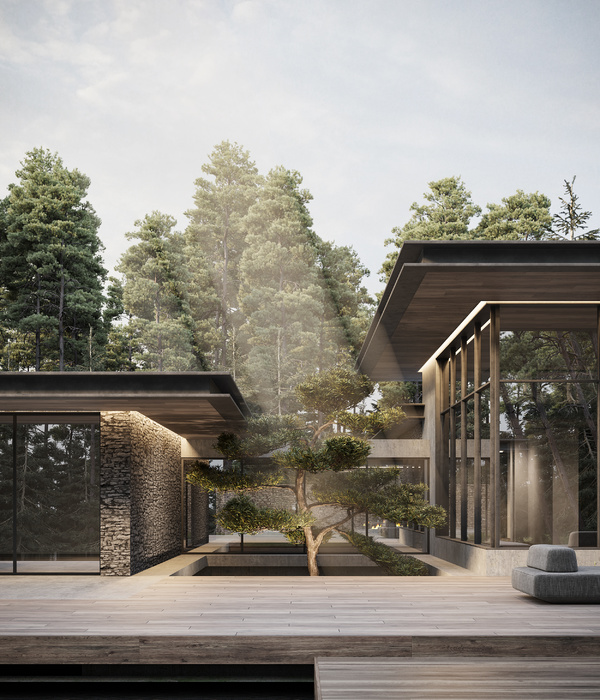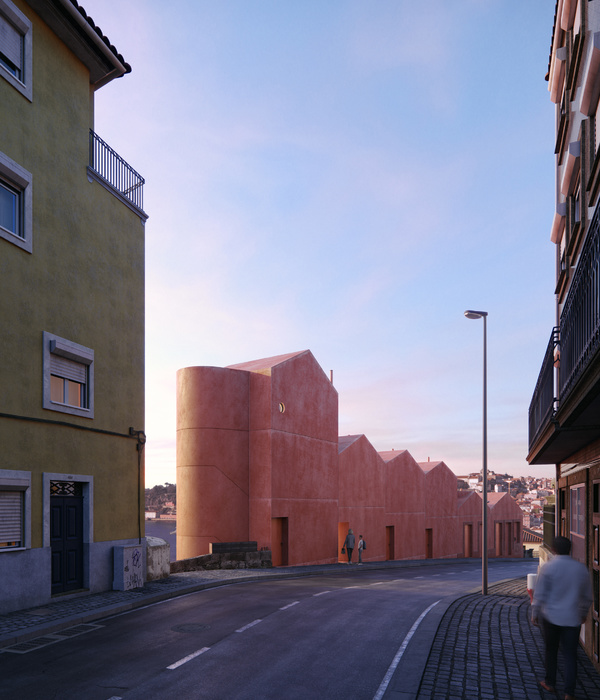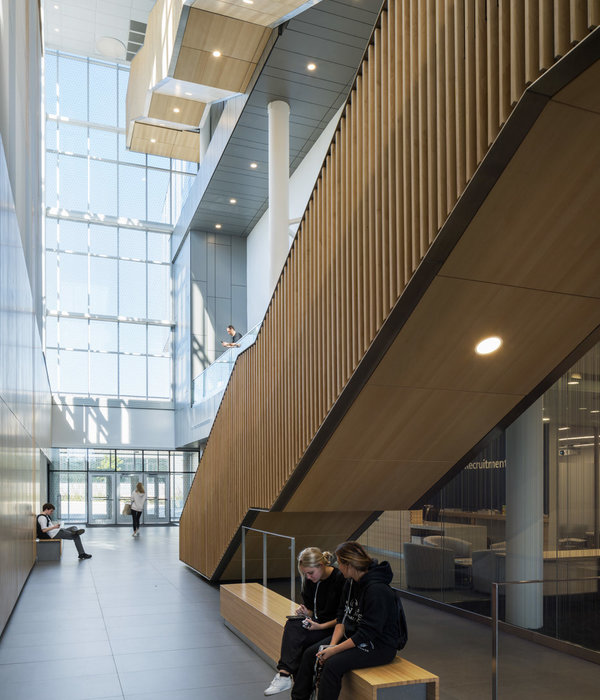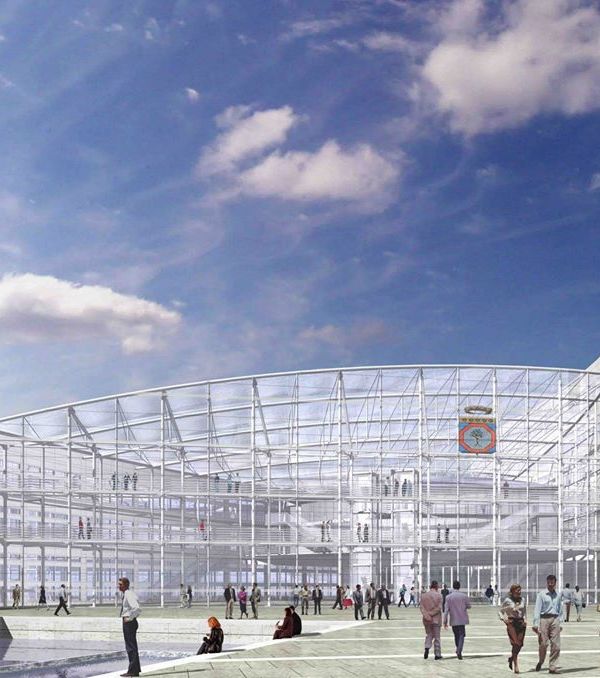Building a cultural center in Beaumont-Hague, in Cotentin, means to integrate an architectural project that takes benefit from the landscape qualities of this piece of peninsula. On the shore, sunken roads are planted of wooded hedges that protects from the wind, and becomes vegetal vaults to filter the light over time. These landscape elements are secular forms from the site culture but also inspiring spaces that can be employed for the design.
The cultural center is a compact block 43m large and 11m high. We are « digging » a covered pathway enlarged on the West angle of the ground floor to mark the entrance of the building. From outside, curtain walls are alternating translucent glass and mirrors. Glazed windows are mounted with a low angle facing the ground to reflect the garden that overlay indoor activities. We appreciate the changing play of the facade, alternating presence and absence, density and thinness. This versatile building combines program, urban scale, music and nature. Inside, sustainability and function are emphasized. Plain wood and metal are selected for their sustainability. Distribution of the diffusion hall on the right, music school and community associations on the left side, is spread on the ground floor in a wide lobby: the alley.
This alley is like a street, a real public space. A main circulation as a point of distribution for all program elements. Volumes receives sculptural feature due to the colorful anodized metal panels. By day, the alley is bathed in light, then it lights up as a display by night. A specific perforation makes the panels play a role of acoustic baffle to absorb noise of the lobby. A canopy enclose the top and the side of the alley. Mostly made with ETFE membrane, a solar optimization work allows us to take advantage of winter solar gains and to protect itself through the hall masking effects during summer.
The diffusion hall is accessible by a threshold inside the public spaces of the ground floor. The counter and its supply, cloakroom, and restrooms, are easily accessible along the alley. This room is properly a closed parallelepiped shape. The space is regulated by a wide rectangular plan that offers various configurations for the stage. The building and acoustic system allows to retain an architectonic concrete facing. Inside this room, the concrete walls are alternating with black metal panels, some sound diffuser elements built in concrete are provided on the side walls. From outside, this dark and massive cube reveals its soundproof performances.
A cavity in the concrete skin makes the entrance of the music school readable from the path. Community association rooms overlays the school for density needs. At the first floor, a mezzanine overlooks the main circulation. The dance hall, opened to the public, is extended by a terrace preserved from the wind. The artist’s studio get northern natural light and the drama workshop looks like a small amphitheater. The associations office connected to the mezzanine has an attractive location close to the terrace, in a way to imagine outdoor use in sunny days.
The music school located nearby the diffusion hall allows artists and students to meet and play music together. Mixing program is a will to provide shared moments between users. It results in the project by a smooth flow, a great opening, and a maximum readability of the programs. From the public space, associations activities are clearly readable to assert their influence.
This layout is a simple way to solve the plot leveling issues and surface water recuperation by developing some banks. The sharp geometry of the building alley is extended by an outside court and a path in the back. The court is excavated in the entrance of the building to offer a covered space.
Architects: PERIPHERIQUES Architectes / MARIN + TROTTIN Architects Emmanuelle Marin + David Trottin
Project team: Charlotte Lefebvre With Anne Clerget, Emily Murphy, Alfredo Luvison, Camille Isaac-Dognin, Gabriele Motta, Anatole Jeannot, Kirsten Elliot, Thomas Dantec, Yann Peter, Alexandre Pascal, Mehrnoush Naraghi, Estelle Grange-Dubellé.
Build team: Anne Clerget, Charlotte Lefebvre
Bureau d’Etudes: TCE, Economie, HQE : EGIS Centre Ouest (Caen) Acoustic: PEUTZ & Associés Scénography: LABEYRIE & Associés 3D pictures: L’Autre Image and Périphériques Architects Pictures: Sergio Grazia Client: COMMUNAUTE DE COMMUNES DE LA HAGUE
Program: A broadcasting diffusion hall, a music school and community associations rooms Area: 2560 m² shon (net floor area) Cost: 6,5 M € not including VAT Schedule Competition: August 2010 Studies: 2011 Construction: Achievement Fall 2015
{{item.text_origin}}


